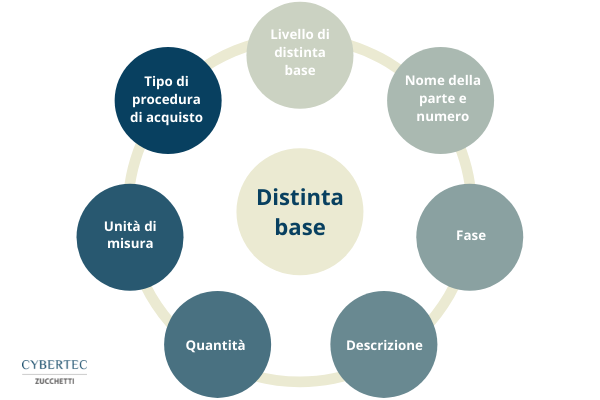Among the essential documents during production is the bill of materials, which lists all the elements necessary for the creation of a product. In addition to bringing benefits in procurement management, it helps to provide greater transparency on the operations to be carried out and on the availability of materials.
Whatis a production bill of materials (BOM)
The bill of materials (BOM) is the list of components, subcomponents, semi-finished products and raw materials needed to manufacture a product. It is mainly used in industrial sectors where the production of the components that form the finished product takes place separately and at different times, to be assembled only later. On the other hand, in the food, chemical and pharmaceutical sectors, where there is production “by process” and the components used cannot be distinguished in the finished product, the bill of materials is called a recipe or formula.
The bill of materials is organized in a hierarchical way, with the finished product occupying the upper level (called level 0 by convention) and the various subcomponents, semi-finished products and raw materials (level one, two, three…) descending. This list of materials is essential in the design, production and assembly phases, because it also indicates the quantities required and illustrates the instructions for implementation.
By highlighting what are the elements necessary for the realization of a product, the bill of materials has a key role to correctly supply the production departments, giving a first measure of the standard cost of a product, and helps reduce the costs of warehouse operations. Inside you can also find information on external processing, internal timing and the use of machinery and personnel.
The types of production bill of materials
There are different types of bill of materials, which vary depending on why it was created and the business scope. The main ones are:
- Manufacturing Bill of Materials (MBOM): with information on the parts and components essential to make a product, including packaging for shipment to the end customer.
Above all, it is used to plan the purchase of raw materials and establish the timing of the production order. This type of bill of materials is to support the purchasing department, which can organise the purchase of materials in good time to negotiate the best price with suppliers. - Engineering Bill of Materials (EBOM): a more technical bill of materials made in CAD or EDA by engineers during the design phase. This document is very important when launching a new product, because it guarantees the availability of materials at the time of production.
- Test and maintenance bill (SBOM – Service Bill of Materials): lists the materials and services for installation or repair operations and the repairable components that must be available from a technical service to ensure the operation of a product.
- Sales Bill of Materials: The list of details that make up a finished product before assembly and during sale, where the components appear as separate items.

The advantages of the production bill of materials
The use of the bill of materials allows to obtain several benefits, which derive above all from a better connection between the logistics and production departments. In particular, it improves raw material purchasing processes by avoiding the accumulation of excess stock; it allows for a better definition of equipment costs; it prevents the risk of stock outs as it guarantees the availability of the necessary raw materials; it reduces errors in the manufacturing phase by defining all processes.
In general, it can be summarized that the bill of materials brings advantages in terms of:
- Transparency: gives precise instructions to the personnel involved in the procurement, assembly and repair;
- Availability: Clearly highlights the list of materials and quantities. Through forecasts on each individual component, it ensures that orders are as accurate as possible;
- Efficiency: improved throughout the supply chain, thanks to fewer delays in production, service and completion of sales orders;
- Less waste: Helps optimize stock levels by ordering the right amount.
The software for the production bill of materials
In addition to specific software for warehouse management, which automatically controls and monitors the correct application of the bill of materials, MRP and ERP systems allow you to manage the bills of materials within the production planning and management process.
Compatible with these systems are APS software, software for the management of production planning and advanced scheduling such as CyberPlan, which allows you to cover numerous business processes, from sales forecasts to planning and scheduling to finished production capacity.
